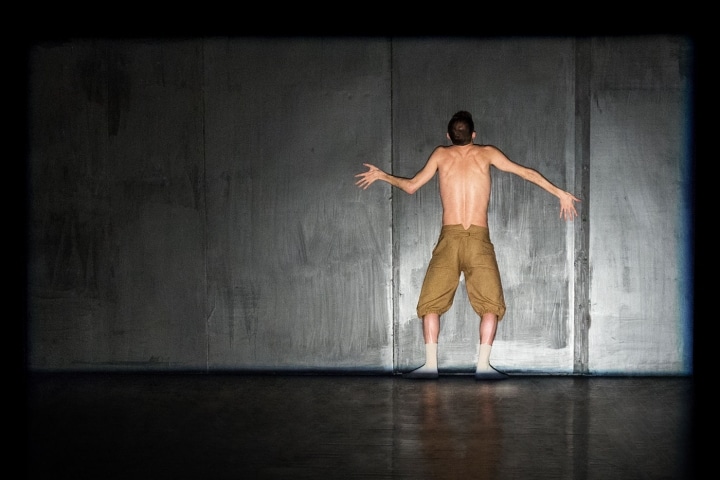When we talk about disability in performance, we actually talk about representation, and representation in performance has at least a two-fold meaning. First of all, there's a tendency starting from the 1960s onwards that Hans-Thies Lehmann conceptualized as postdramatic theatre in his 1999 work of the same name – "It becomes more presence than representation, more shared than communicated experience, more process than product, more manifestation than signification, more energetic impulse than information." 1
- Lehmann, Hans-Thies. Postdramatic theatre. Translated by Karen Jürs-Munby. Routeledge, 2006. Print., p. 85, chapter Panorama of Postdramatic theatre.
It has revolutionized theory and practice in contemporary performance in Europe by making classical representative techniques outdated and also suspicious – documentary techniques or Rimini Protokoll’s theatre of experts, for example, grew as a way to present truth and reality on stage instead of presenting a lie which we pretend to believe in. So when classical dramaturgy is deconstructed and performers on stage do not psychologically reenact a character, but are rather performing themselves, and their actions constitute both the reality of the performative action and their own identity, then we can also talk about representation as understood by identity politics.
There has been an assumption that visibility gives power. This has been a large part of progressive politics and the emancipatory struggles in the second half of the 20th century. In contrast, Peggy Phelan's states in her book Unmarked: the politics of performance, “If representational visibility equals power, then almost-naked young white women should be running Western culture.” 2 Regarding disability in performance, we often hear that disabled people have been given a voice. The fact that someone is given a – as opposed to claiming her own – voice, reveals not only deep inequality within the power relations of our societies but also a self-congratulatory liberal attempt to hide it.
- Phelan, Peggy. Unmarked: the Politics of Performance. Routledge, 1996. Print, p. 10, chapter Broken symmetries: memory, sight, love.
The term “performance” itself also has been commonly used both in relation to the visual art context since the ’60s and to field of contemporary dance in the 21st century. Performance art stemming from the visual art side influenced theatre makers and was appropriated by contemporary dance at the turn of the century. Today we see the reverse – the visual art world accepts a new generation of choreographers and movement-makers who enrich the performance art discipline with elements and techniques from choreography and theatre (Alessandro Scarrioni, Alexandra Pirici, and Anne Imhof), as well as many young makers who try to develop their work so that it can fit both theatre and visual art contexts (Pietro Marullo in Brussels, and Wild Vlees in Amsterdam).
Disability in performance comes in between these complex developments, between identity politics and contemporary performance, between representative and performative functions, between visual and performing arts scenes – and comes two-fold as well, as artists who use disabled performers in their works (like Jerome Bel or Doris Uhlich) and as disabled artists who problematize their own bodies and identities (like Raimund Hoghe or Chiara Bersani). There are many examples, but to personalize this topic, I will focus on four artists/performances working with disability which I have seen live and which represent a wide range of practices: choreographic, documentary, dramatic and experimental.
RAIMUND HOGHE (DE)
While I was still a student in dramaturgy in the Academy of Sofia in 2012, I attended a talk by Raimund Hoghe, Pina Bausch’s dramaturge-turned-choreographer. Influenced by Bausch’s tanztheater and his own life and memories, Hoghe developed his first solo in his living room in front of the window, totally alone. Neglecting the traditional idea of success and following his own necessity to create, he is taking a political stance by approaching history both by using his own disabled body in a trilogy of personal solos and by revisiting major works from the history of dance in choreographic pieces for other dancers.
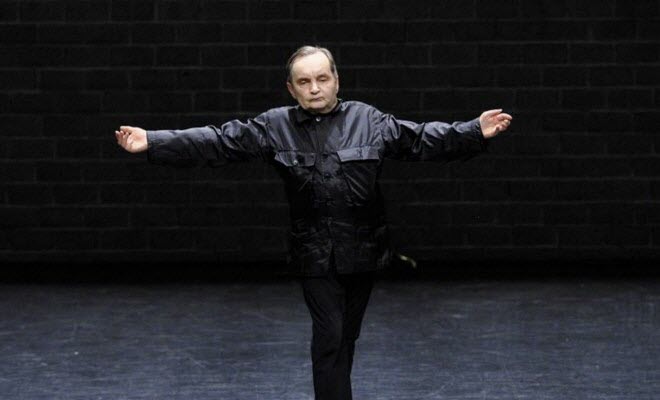
"When I use, for example, a very beautiful music like Swan Lake, there is a discrepancy between the beauty of the music and my own body which many people describe as ugly." 3 In this process he claims space for disabled artists while also exposing the rigid norms of classical beauty. "To see bodies on stage that do not comply with the norm is important - not only with regard to history but also with regard to present developments, which are leading humans to the status of design objects. 4
- http://www.raimundhoghe.com/english.php
- http://www.raimundhoghe.com/english.php
The present, “progressive” postmodern situation is not any better in terms of body politics than classical ballet, insists Hoghe. Some people are afraid of his body and think it should not be shown on stage, he says. So for him the sheer fact of his presence on stage becomes a political act, an act of resistance, an act of claiming space for the other, not just for himself. While in the relatively obscured field of contemporary performance disability might be more visible and accepted, mass media still imposes harmful standards of beauty that continue to hide and stigmatize anything outside of the norm. Hoghe’s position frames the current choreographic practices in the larger socio-political context of late capitalism, which in the 21st century has become a topic of discussion in both the theory and practice of dance and choreography. He’s on stage to stay and the audience has to get used to it.
At the same time, Hoghe insists that he doesn’t do “disability art” or any form of “art therapy.” He positions himself as an artist equal to abled artists but makes an important distinction from the political push to instrumentalize art for social work. In neoliberal Europe budget cuts have become the norm in publicly funded art and culture, and “art for art’s sake” is seen as a cynical and elitist luxury in a time of crisis. Classical art institutes are still well-funded, while the contemporary scene is pushed for market liberalization – it should either be self-sustainable or it should prove its value beyond the artwork, exactly in its social impact. As bureaucrats find it difficult to measure artistic achievement, they redirect the cash flow to “socially-engaged” practices in which artists are supposed to be doing the job of social workers and the funding goes to the projects who tick all the right boxes. However, artists are not trained and prepared to do social work (and often don’t really want to do it), nor are social workers actual artists. The minority groups in this situation remain passive objects of projects, funding schemes and political strategies. The result of this bureaucratic push for “inclusive” practices is artworks of suspicious quality which are “pushing minority groups in the corner,” in the words of Hoghe.
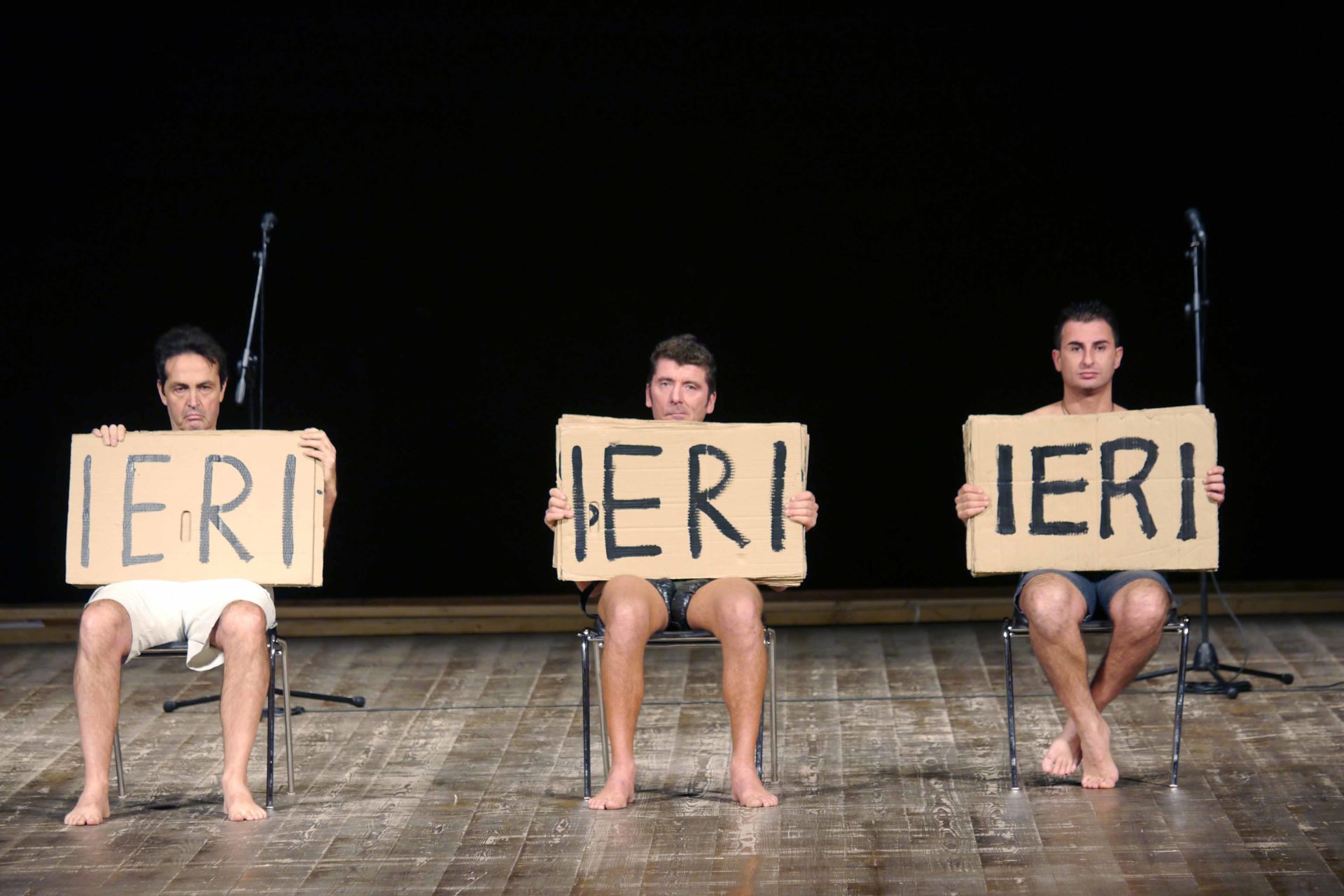
"We fell in love with them. With their authenticity. With their imperfection. With their dirt. " "Pinocchio corresponds to our need to make a necessary theater. A theater where life bursts onto the scene with all its strength without being mediated by fiction. Where the non-actor brings into play his experience, his unawareness, his sincerity." 5
- Original: Ci siamo innamorati di loro. Della loro autenticità. Della loro imperfezione. Della loro sporcizia. Pinocchio corrisponde al nostro bisogno di fare un teatro necessario. Un teatro dove la vita irrompe sulla scena con tutta la sua forza senza essere mediata dalla finzione. Dove l’attore non attore mette in gioco il suo vissuto, la sua inconsapevolezza, la sua sincerità. http://www.babiloniateatri.it/portfolio-items/2012-pinocchio/
These are excerpts of the website description of Babylonia Teatri’s show Pinnochio which was part of the official selection of Biennale Teatro in Venice in 2016. Three medical coma survivors – Paolo Facchini, Luigi Ferrarini, Riccardo Sielli – are exposed half-naked on stage, interrogated by the powerful and invisible voice of the director who asks them to shamelessly share quite intense personal stories from before and after their accidents as well as memories from the time in hospital. Controversially, the metaphor of Pinnochio, the wooden doll that is brought back to life, is used in relation to their broken bodies which are revived after near-death experiences. The piece ends with the oldest man, tied in ropes, lifted high above the stage, like a wooden doll, sort of liberated from the down-to-earth pain but also completely helpless in the air, suspended from his own life by the invisible power of fate. The audience reaction was impressive – some people were outraged and stormed out of the venue, while others were brought to tears. It was exceptionally clear that that the work is powerful and even shocking, while at the same time extremely problematic.
The divisive discussions continued in the bars of Venice in the days to follow with people defending and attacking the show. The attackers insisted that the Pinnochio metaphor also accidentally reveals the way the company treats its performers. Asking disabled non-professionals to reveal both physical and emotional vulnerabilities for shock value can be seen as a sort of contemporary freak show, as a way for the directors to push their career forward and lastly, as an attempt to make the unfamiliar experience of the other a little more consumable. The performers “are given a voice” but are they truly empowered if they immediately sink back into invisibility right after the end of the show, replaced by others with even more shocking stories and bodies for the next production? In the same festival the company also conducted and publicly presented a workshop with people with Down syndrome, people of short posture and blind people as a first step towards a new production, and the disabled bodies stood in stark contrast to the able-bodied director conducting them. The value of their documentary, non-scripted stories maybe comes automatically from their identity, however it’s not they who reap the rewards.
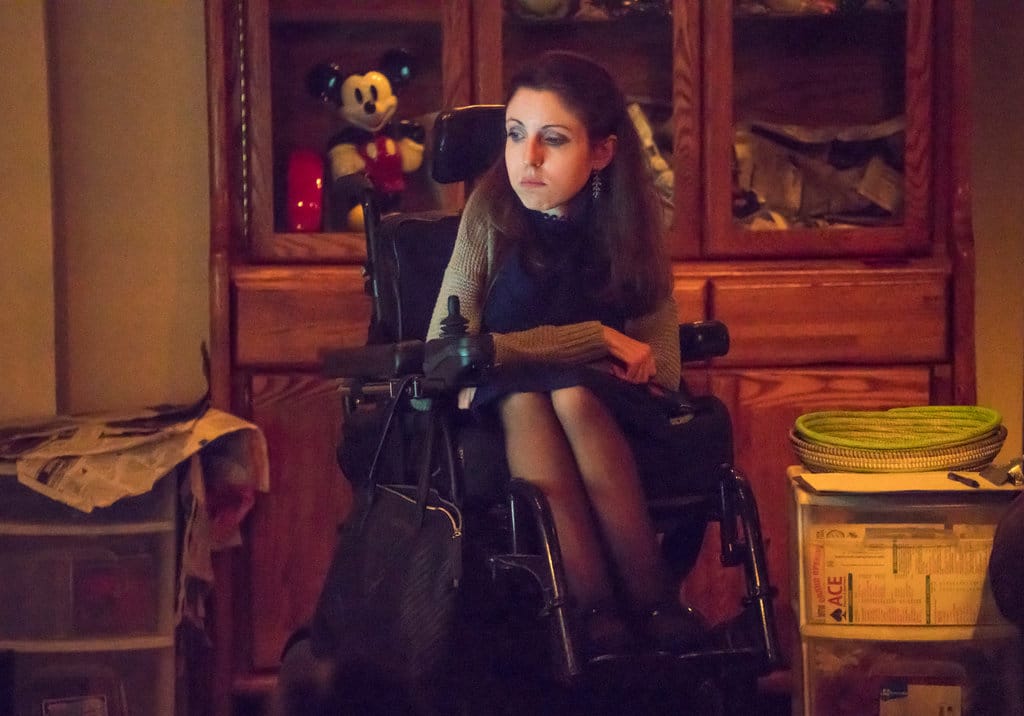
THEATER BREAKING THROUGH BARRIERS (US)
Exactly the opposite experience was the Off-Broadway show The Healing which I saw a month before the Biennale Teatro in 2016. It is probably important to stress that the German and European theoretical turn towards the postdramatic theatre and experimental performance hasn’t gained as much ground in the US, especially in the text-based theatre. Set within an old-fashioned naturalistic living room, the show is a classical representational play written by Samuel D. Hunter specifically for the disabled theatre group Theater Breaking Through Barriers – so that each of the characters with various disabilities fits a particular actor. The play problematized the harmful effects of religious fanaticism as it explored how a group of disabled people were emancipated from their Christian upbringing which both shamed them as “spiritually imperfect” and promised them salvation if they prayed and avoided sin. While most of them managed to grow into integrated members of a secular society, having jobs, relationships and a critical distance from their religious background, one of them had internalized the self-hatred, leading to her suicide. With high quality dramatic writing and well-honed professional acting skills, the production managed to leave a sense of empowerment and grace, despite not being progressive in its form and delivery. These disabled actors claimed space within the tradition of representational theatre to tell fictionalized stories to which they are related by an embodied experience. These stories resonated for a larger audience, which was not shocked, made uncomfortable or alienated by the difference of the performers’ bodies but related empathically to both the struggles of the characters and the professionalism of the actors, and in the process took part in the constitution of a more inclusive self-image of society.
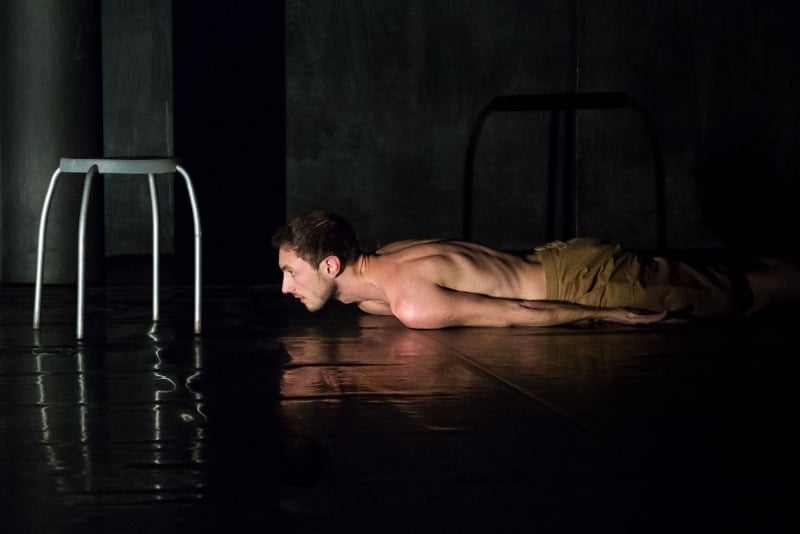
ALTROVE (CH)
Visibility receives a totally new meaning within the artistic practice of Alessandro Schiattarella. Diagnosed with a progressive muscle atrophy condition in his arms, as opposed to Hoghe, Alessandro can pass as an “abled” or “normal” dancer. Living the life of a disabled person on a daily basis, Alessandro is constantly confronted with the choice between showing and hiding it on stage. Instead of choosing between the two, he turns this constant questioning into the content of the work itself which approaches the theme of in/visibility of disability and the re/invention of a new corporeal beauty. Some audience members are prepared with background information on the artist, others are “blank slates” and judge the work only on its artistic qualities – something a disabled artist rarely receives. However, their opinion can be easily influenced when they learn about the disability, as if being disabled automatically brings some value to the “attempt.” This shift of opinion when confronted with the “truth” or “reality” – as if what they’ve seen up until this point was not the reality – is more about a personal indulgence and a proof of liberal attitudes than about the work itself. What Alessandro’s condition and practice tell us is that disabled artists are above all artists, they are human as much as we are human, their work is informed by their identity as much as everyone else’s work, and the quality of it can be separated from the categories into which we’re constantly trying to fit people.
Yasen Vasilev (Bulgaria, 1988) is a writer and performance maker. He started his practice with two poetry collections transformed into spoken-word, followed by five theatre plays which received awards, residencies, publications, readings, workshops and productions internationally. Since 2015 he has been working on NUTRICULA, a physical solo in collaboration with artists from different backgrounds and locations, shown in Shanghai, Lisbon, Vilnius, Turin and Sofia. Since 2018, he is a contributing author for Springback magazine and a programmer at Theatre Laboratory Sfumato.


